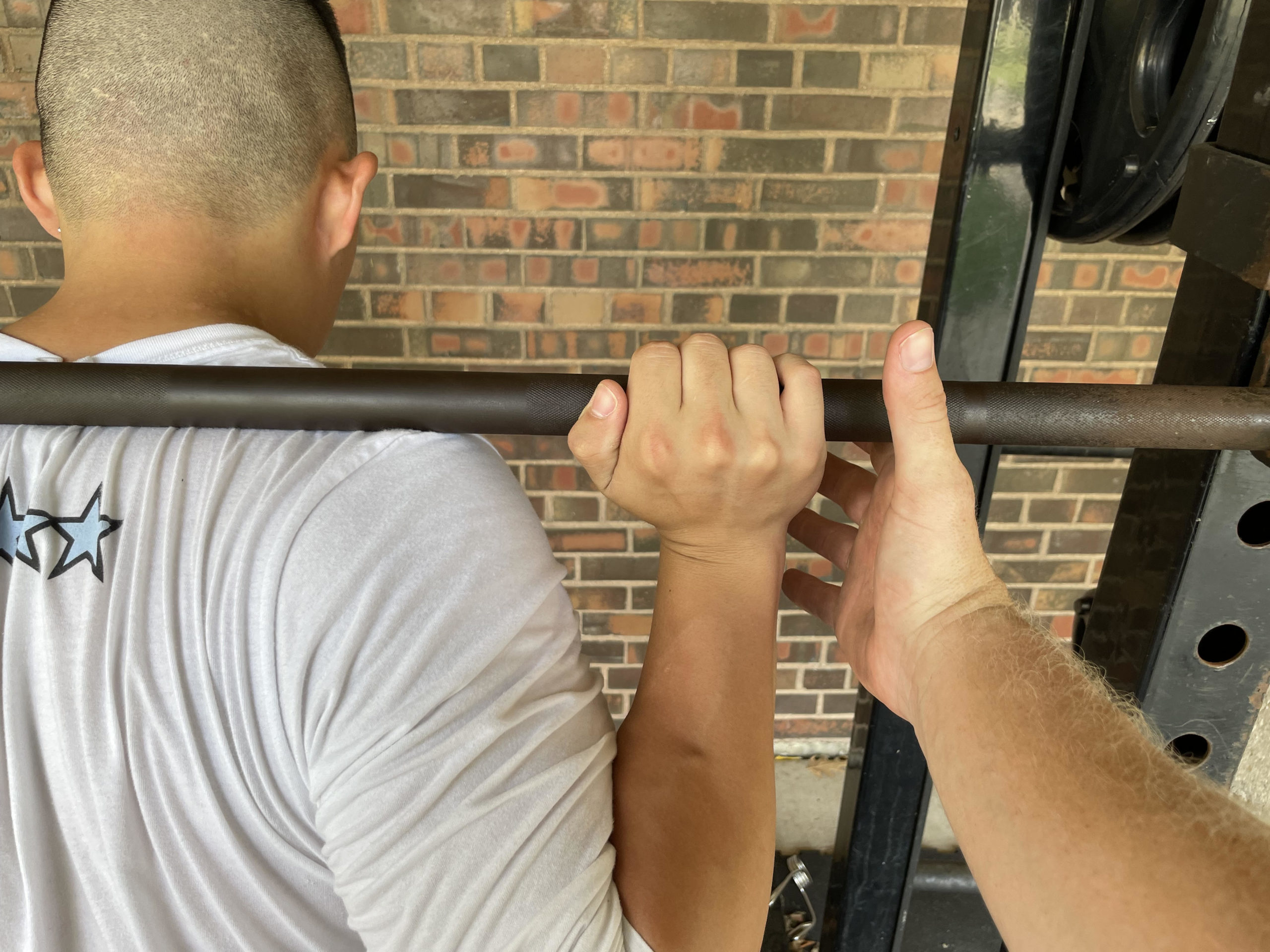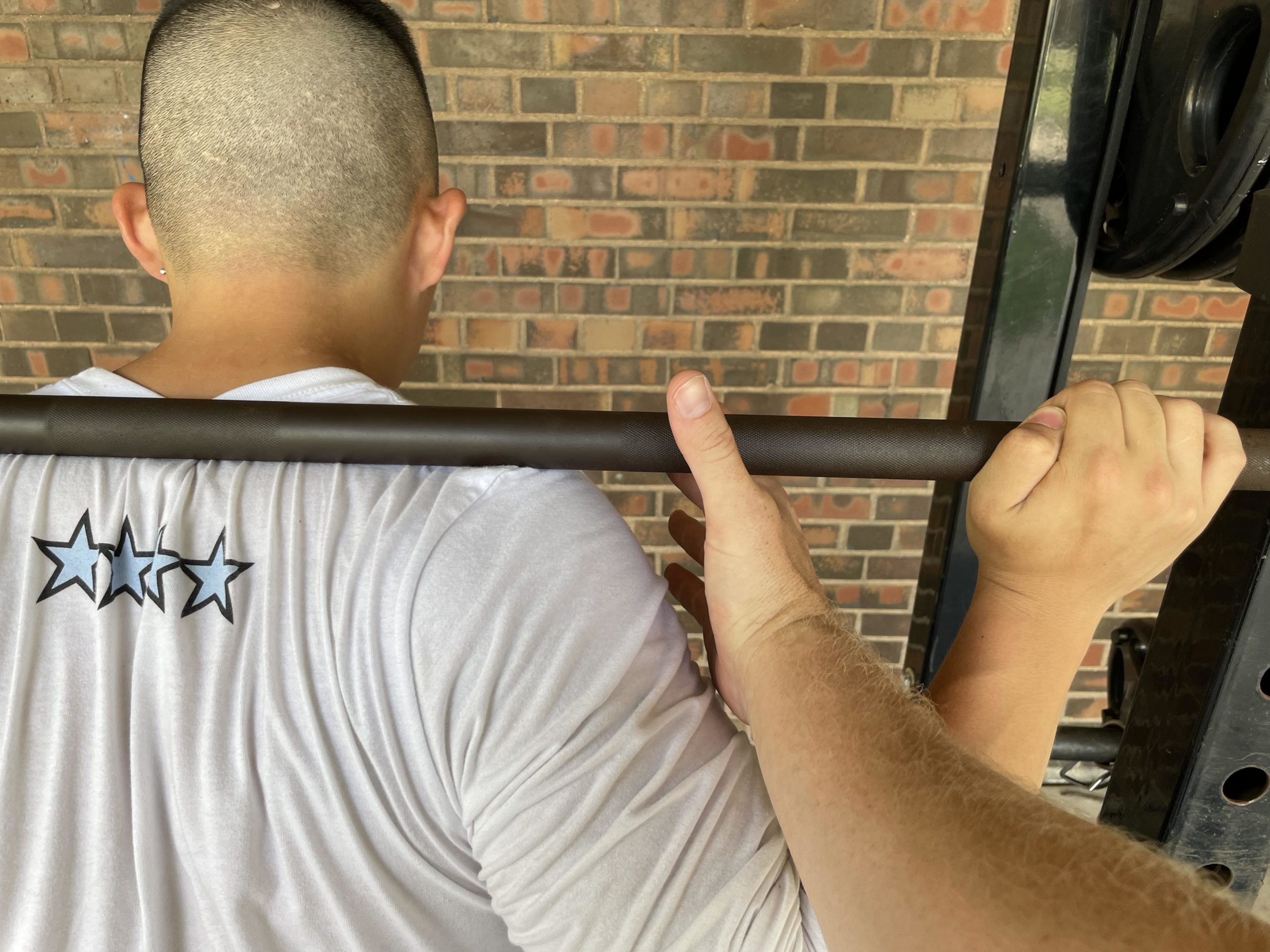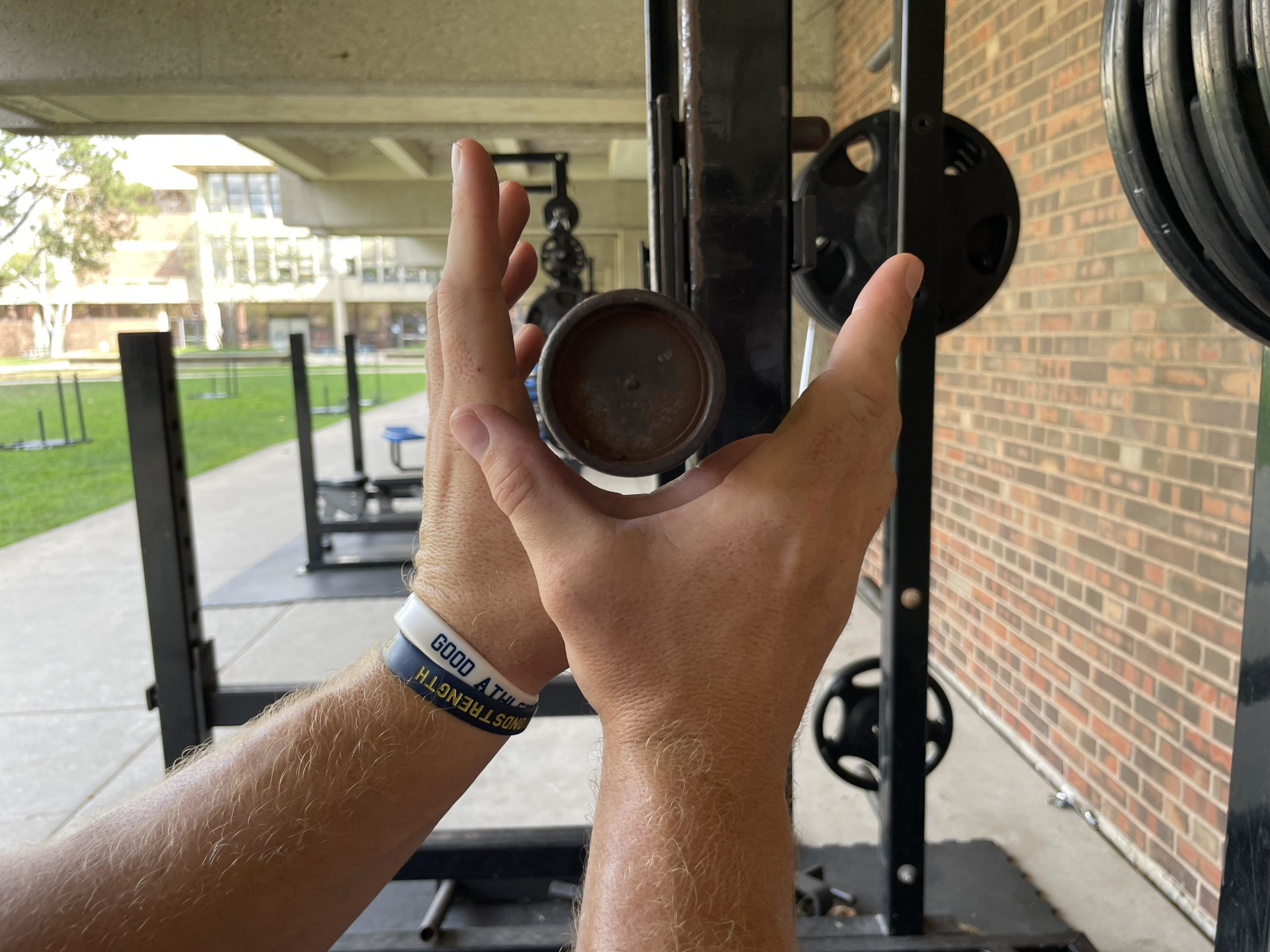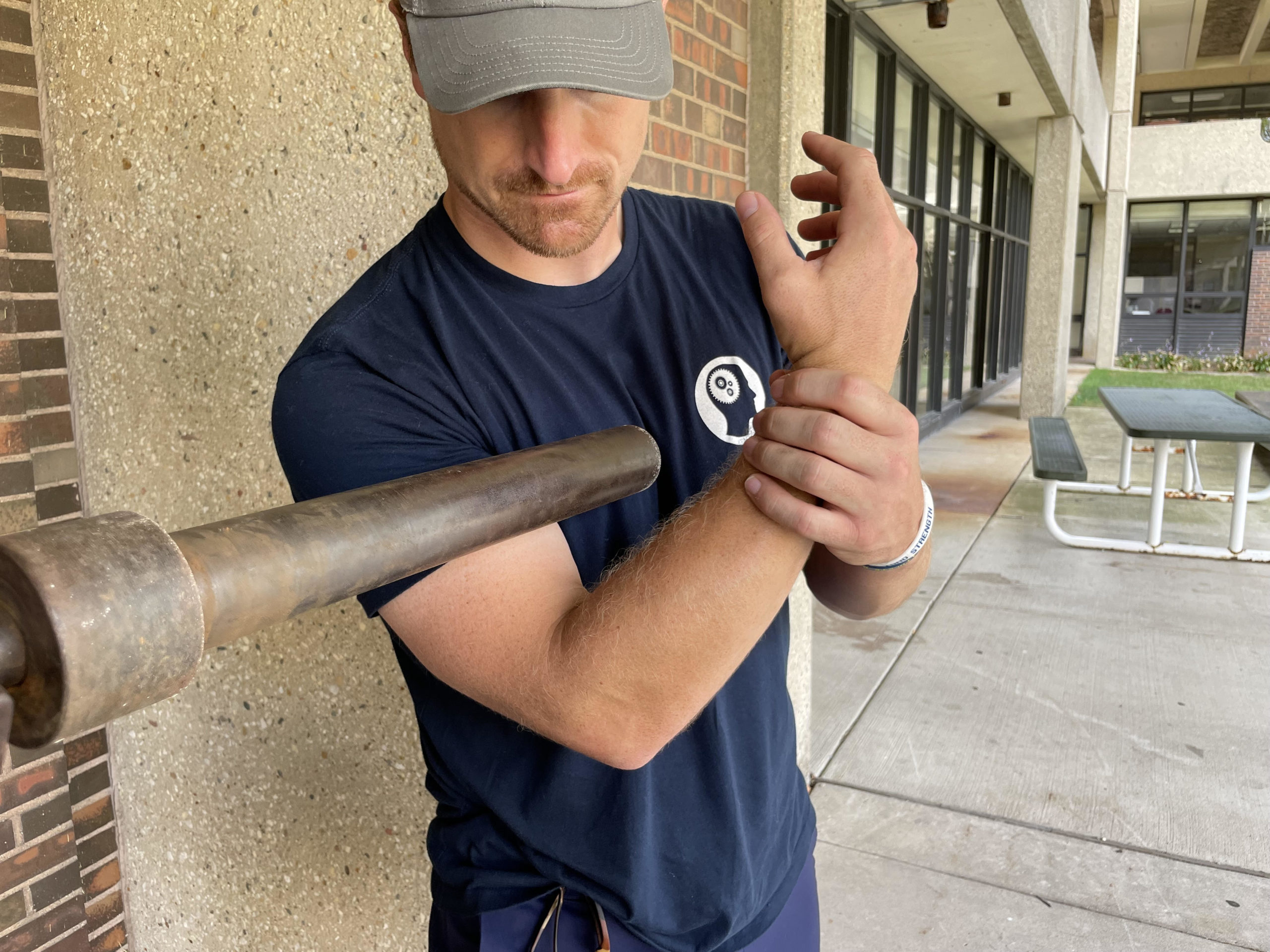Building a Culture of Trust through the Barbell Back Squat
On fourth and one, with the game on the line, the stronger team has an advantage. Anyone who has been in that situation knows that what matters goes beyond physical strength. Strength of mind, and the strength of bonds between teammates, often determine the result.
Strength training has enormous potential in the development of team culture. The weight room is a fantastic place to improve physical performance, mindset, and inter-team communication. In the pursuit of improved performance, every moment can be a teaching moment. Coaches should recognize the potential of the weight room as an educational space. In addition to helping perform on the field, lessons learned from the barbell back squat will go Beyond Strength, with the potential to influence outcomes for a lifetime.
The barbell back squat can improve both mental and physical performance. It has become a staple in most training programs, as it is linked to injury reduction, sport-performance improvement, and speed development. It also has the potential to improve mindset… IF the environment is created by high-quality coaches and upheld by team culture.Squat Well
The barbell back squat can be the most challenging activity in the weight room. Coaches will remember that priority one is to teach athletes to move well.
Squat, or bilateral hip hinge, is one of the most basic and primary movements of the human body. Teaching an athlete to squat well is more important than squatting heavy. That said, once an athlete squats well, the coach will begin to adjust the resistance to create positive adaptation and improved performance. Eventually, most athletes are ready to perform a barbell back squat.
As preparedness increases, so does the amount of challenge necessary to improve performance. These moments of pain and excitement and effort begin the process of growth. Growth depends on both challenge and recovery. An injury in the weight room stops the process in its tracks.
To avoid injury, the ideal setup for the barbell back squat includes at least 3 people: the Lifter, the Safety Spotter, and the Technique Spotter (aka the Quality Control Spotter).
Know Your Role
Role #1: Lifter
The lifter’s goal is improved performance. In this pursuit, the lifter is responsible for their safety to keep themselves and their spotters safe. “Committing to the lift” is key.
Coaching cue: Commit to the lift – when the bar is on your back, commit to the entire movement, un-rack to rerack.
Commitment begins to cultivate the sort of mindset we hope to develop in the weight room (grit, resilience, follow-through), but it is also essential to athlete safety. The safety arms in a squat rack should be the last resort – finishing the lift, even if the spotters have to do a little work, is the safest option.
If the lifter has thoughtfully selected the load on the bar, then it is unlikely that he will have guessed wrong by much. For example, if a lifter attempts a new max at 220lbs but is only prepared to lift 200 or 215, then the spotter will only have to provide about 10-20lbs of assistance… that is, IF the lifter has committed to the lift. That same spotter should not be expected to provide the full 220lbs of assistance. This requires both commitment and accountability from all involved.
Shared accountability depends on trust.
Coaching cues: Lifter, trust your spotter. Spotter, lock-in.
When a coach asks a lifter to trust their spotter, they should also remind the spotter to lock in, focus, and commit to the safety of their teammate. Coaches should regularly remind spotters to appreciate this role and take it seriously.
Role #2: Safety Spotter
Safety spotter might be the most important job in the weight room. As the lifter subjects herself to a challenging amount of resistance, the spotter is responsible for safety in that same moment… the process of athletic enhancement requires both. After all, if an athlete gets injured in the weight room, their performance level immediately drops to zero.
Coaches might also want to add character development cues that enhance both safety and team culture. Remind the spotter that their job requires focus and awareness, effort, and commitment to the team’s purpose as well as their teammate’s wellbeing. Peer-to-peer empathy can be enhanced by asking the spotter to imagine herself performing the same lift.

When the spotter successfully fulfills this obligation, they build trust.
The simple act of a teammate taking another’s safety into their hands can be incredibly valuable for team culture when framed appropriately by a coach.
How to spot with one spotter
In a weight room setting, this is the traditional method of spotting.
- Base — Just like the lifter, the spotter should have a stable base: two feet flat on the ground, ready to support as needed.
- Hands — Before the lifter un-racks the weight, the spotter should have hands ready. Use an “L” shaped hand. The space between the thumb and forefinger should hover just below the bar (Picture 1). The spotter’s hands can be placed inside or outside the lifter’s hands, depending on the width of their grip, never going so wide that they might risk catching a finger between bar and rack when the lifter re-racks the weight (Pictures 2 & 3).
- Move with the Lifter — The spotter should hinge at the hip and knee as though performing a squat of their own, with hands hovering approximately 2-3 inches below the moving bar.
How to spot with two spotters

There are multiple reasons why a lifter might want multiple spotters, not least of which is the level of comfort a lifter has with his or her spotter, especially at the high school or college level. Coaches should normalize the process of asking an athlete how they would like to be spotted. In situations where a female athlete might be in a group of primarily male athletes, they will often ask for a coaching spot or side spotters.
In our weight room, psychological development and safety matter as much as physical development and safety.
When using two side spotters, all three parties must communicate well.
- Base — Spotters will have a stable base according to their hand placement, keeping the potential load (the bar, should the lifter need assistance) above their base.
- Hands or Elbows — For lighter training loads, spotters might be able to use their hands to spot each end of the bar. In this case, the hands will be directly under the bar, with thumbs crossed, creating the shape of a “U” (Picture 4). For heavier loads, spotters might want to use an elbow spot, where the nook of the bent elbow will be prepared to support the bar (catch arm) and the free arm (support arm) grabs the wrist of the catch arm (Picture 5).
- Move with the Bar — The spotter should hinge at the hip and knee as though performing a squat of their own, with hands hovering approximately 2-3 inches below the moving bar.
Role #3: Technique Spotter

The technique spotter is the quality control expert in the group. This athlete will stand beside the rack and assess the movement of the lifter and spotter, providing regular feedback throughout the lift. Coaches should encourage the technique spotter to scan the lift from top to bottom: bar placement, posture, hip movement, and stance. If any of these areas are concerning the technique spotter must call it out to the group.
» ALSO SEE: Study — Pregame Routines Boost Athletes Performance
For example, the technique spotter might continually remind an athlete to adjust their posture. They might note that the athlete is rolling forward onto the front half of their shoe as their heels raise off the ground – this has to be noted. An athlete might not be getting full depth (our depth expectation is to have the hip at or below the level of the knee at the bottom of the movement). Whatever the technique spotter notices, they must call out. This includes encouragement for good form and effort.
The technique spotter will also keep an eye on the safety spotter, ensuring that all athletes are the same and attentive throughout the set.
Coaching cue: What do you see, Spotter? Talk to your teammates!

This degree of communication taps into the valuable experience of reciprocal teaching. It also, plain and simple, gets teammates used to talking to one another and holding each other accountable.
Beyond Strength
If a coach truly wants to go Beyond Strength and teach lessons that last a lifetime, they will recognize and aim to optimize that opportunity in all of their teachings. The barbell back squat offers an ideal learning platform.
After a close look, it seems that a number of SEL (Social and Emotional Learning) and Character capacities can be developed through this practice of the barbell back squat, including but not limited to:
- self-awareness
- grit
- gratitude
- growth mindset
- purpose
- commitment
- and focus, among others.

These are not definite outcomes of the weight room setting. It takes talented, dedicated coaches to ensure that these lessons are instilled. To those already using moments like the barbell back squat to improve students’ lives through strength, thank you. And to anyone hoping to do this work even better, reach out! We’d be happy to partner with you on your mission.




